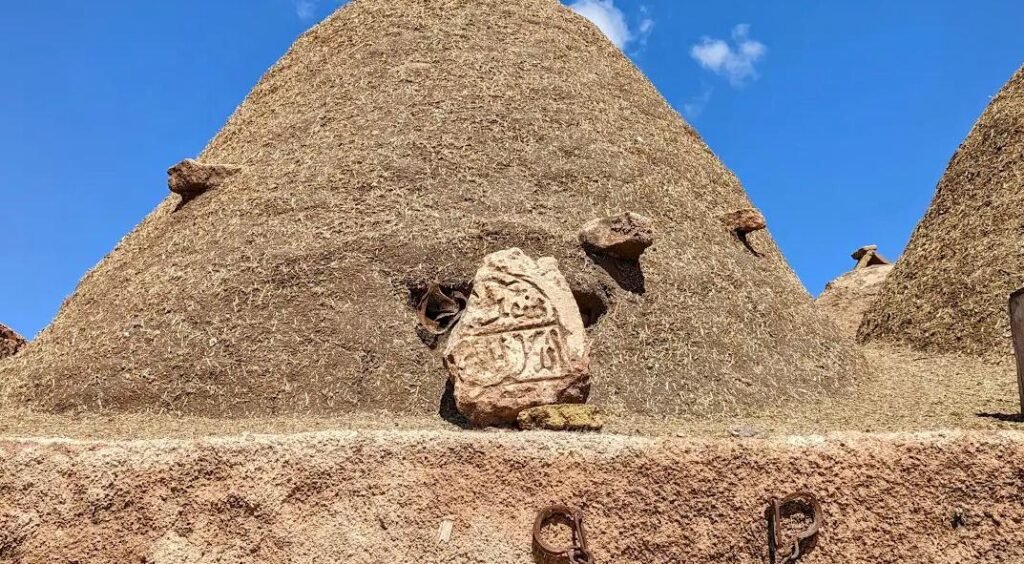Description
Harran Mudbrick Houses: A Glimpse into the Past
Nestled in the heart of Southeastern Turkey, the ancient town of Harran in Şanlıurfa province is a treasure trove of history and architectural marvels. Among its most iconic features are the mudbrick houses, which have become synonymous with Harran's cultural identity. Located at Cumhuriyet Mah Biter Kume Evleri No:3, 63510 Harran, these cone-shaped houses are not only a testament to human ingenuity but also a window into a bygone era.
A Historical Overview
Harran’s history dates back thousands of years, with its name mentioned in ancient Mesopotamian texts. It was a significant center of trade, science, and culture, owing to its strategic location along ancient trade routes. Harran was once home to the Sabians, a religious group who worshipped celestial bodies, and later became an important hub in the Islamic Golden Age. The town’s architecture reflects its rich history, with influences from various civilizations that thrived here.
The mudbrick houses of Harran are thought to date back to the 3rd century BCE. Their unique design has remained largely unchanged over centuries, providing insight into the traditional building techniques of the region. These houses were constructed using locally available materials, including mud, straw, and wooden supports, making them an excellent example of sustainable architecture.
Unique Architecture of Mudbrick Houses
The defining feature of Harran’s mudbrick houses is their conical domes. This architectural style is not only aesthetically pleasing but also highly functional. The conical shape allows for efficient ventilation, keeping the interiors cool during the sweltering summers and warm in the chilly winters. The thick mudbrick walls provide excellent insulation, making the houses perfectly suited to Harran’s harsh climate.
These houses are typically built close to one another, forming clusters that create a communal living environment. The interiors are modest, with a central living area surrounded by smaller rooms for sleeping and storage. The roofs are often adorned with small holes or openings to allow natural light to filter in, reducing the need for artificial lighting.
A Visit to the Mudbrick Houses
Visiting the mudbrick houses of Harran is like stepping back in time. As you wander through the narrow alleys of this ancient settlement, you’ll be struck by the timeless beauty of these structures. Many of the houses are still inhabited, while others have been converted into guesthouses or museums.
One notable example is the Harran Cultural Center, located within one of these traditional houses. Here, visitors can learn about the history and significance of Harran’s architecture through exhibits and guided tours. You can also experience traditional Harran hospitality, with locals often offering visitors a taste of their cuisine or a demonstration of their crafts.
Cultural Significance
The mudbrick houses of Harran are more than just architectural landmarks; they are a symbol of the town’s enduring cultural heritage. For centuries, these houses have been home to generations of families, fostering a strong sense of community and continuity. The construction techniques and materials used reflect the region’s intimate relationship with its environment, showcasing a deep understanding of sustainable living long before it became a global concern.
Harran’s mudbrick houses also play a significant role in local folklore and traditions. Stories passed down through generations often reference these iconic structures, highlighting their importance in the cultural consciousness of the region. Festivals and events in Harran frequently feature the mudbrick houses as a backdrop, further cementing their status as cultural icons.
Challenges and Preservation Efforts
Despite their historical and cultural value, Harran’s mudbrick houses face several challenges. The structures are vulnerable to natural erosion, particularly during heavy rains, which can weaken the mudbrick walls. Additionally, modernization and urbanization have put pressure on the traditional way of life, leading to a decline in the number of preserved houses.
To address these challenges, local authorities and international organizations have initiated preservation efforts. These include regular maintenance of the houses, the use of traditional building techniques in restoration projects, and the promotion of Harran as a UNESCO World Heritage Site. Educational programs and workshops have also been organized to teach younger generations about the importance of preserving their cultural heritage.
How to Get There
Harran is easily accessible from the city of Şanlıurfa, which is approximately 45 kilometers away. Visitors can take a bus or hire a taxi to reach the town. The journey offers picturesque views of the Mesopotamian plains, adding to the overall experience. Once in Harran, the mudbrick houses are located in the Cumhuriyet Mahallesi area, making them easy to find.
Tips for Visitors
- Dress Comfortably: The climate in Harran can be extreme, so wear light, breathable clothing in summer and layer up in winter.
- Respect Local Customs: Harran is a conservative town, and visitors are advised to dress modestly and seek permission before photographing locals.
- Engage with Locals: Don’t hesitate to strike up a conversation with the residents. They are often eager to share stories about their town and its history.
- Time Your Visit: The best time to visit Harran is during spring or autumn when the weather is more temperate.
Conclusion
The mudbrick houses of Harran are a remarkable testament to the ingenuity and resilience of the people who built and continue to maintain them. These structures are more than just dwellings; they are living monuments to a rich and diverse cultural heritage. A visit to Harran offers a unique opportunity to step back in time and experience a way of life that has endured for centuries. Whether you’re a history enthusiast, an architecture aficionado, or simply a curious traveler, Harran’s mudbrick houses are sure to leave a lasting impression.
Location
-
cumhuriyet mah biter kume evleri no, D:3, 63510 Harran/Şanlıurfa








